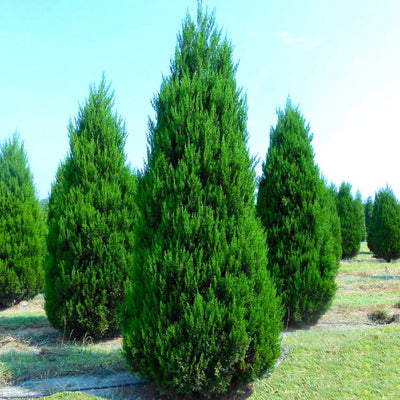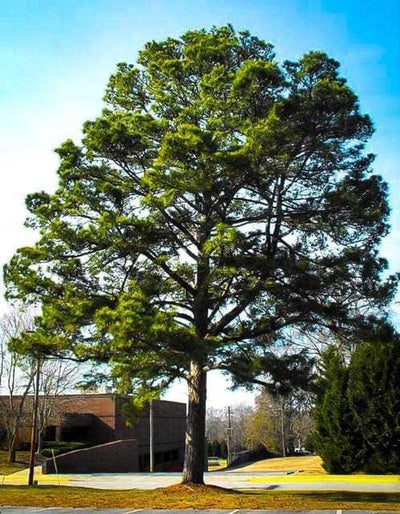The Pine Family: Nature’s Elegant Conifers
The prominent needle leaves of pine tress along with the intensely rough pieces of bark that they have, has painted the word for centuries, and they emerge from the formidable forests of the United States and have been simplified in the homes as decorations during Christmas and much more.
The family of a pine tree, known as the 'PInaceae family' has many members that provide a sight of glee, offers a tremendous ecological importance, and many other advantages too. This text shall discuss the world of a very unique genus of trees and highlight the most important members of the pine family.
The Pine Family: A Rich Legacy in Nature
Pine trees are one of the very few "evergreen" trees in the world and thrive in many harsh environments. Conifers are classified in family Pinaceae, which includes: leaved spruces, and firs, and cedars. They're famous and easily recognized due to their slender loosely bound "fingers" and long, enchanting needle-like leaves.
As medicine progressed, people started using parts of the pine tree to cure certain illnesses. The vitamins A and C found in pine tree needles, as well as the supportive respiratory and immune oils, have led human civilization to value it. These people adorned their homes and gardens with pine trees and also treated diseases like cold, cough, and other respiratory sicknesses.
There are several species of pine trees and their wide geographical distribution indicates the value of every type of pine. All of these trees, as will be described in this essay below, have distinct shapes and ecological features.
Some Prominent Members of The Pine Family
Loblolly Pine (Pinus taeda)
Loblolly pine trees are some of the more widely known trees in the United States. Lo, and behold, they can be found in the southeaster regions, and are a common sight there. These trees as well as many more are well known due to their rapid growth, as well as their upright and slender stature. Unlike the rest of the trees in the southern forests, these trees are said to have long delicate needles, sitting atop slender arms, and are adorned with oversized pine cones.
The Loblolly Pine has economical value since it's important in the production of timber, wood-pulp paper products, and carrying out projects of reforestation.
The Loblolly Pine has the unique feature of being noticeable in the western part of the US, known to be bluish green and are straight and grow in tall mountain tops.
The turpentine odor is unscientifically confirmed, but many are of the opinion that this is indeed so since the tree is dependently linked to the turpentine like aroma that it emits when scratched.
Ponderosa Pine (Pinus ponderosa)
Ponderosa Pine is known to be important in the balancing and maintaining of the ecosystems of the forests. Also the timber of the tree is in high demand because the wood is of the finest quality.
White Pine (Pinus strobus)
White pines are large trees with slender, blue-green needles, known for their splendid sight across the Northeast and Southeast regions of the United States, as one of the longest living pine trees. They can live for centuries. Their beautifully straight trunks and attractive foliage make them incredibly useful for landscaping and reforestation.
Well drained soils and properly managed timberlands help white pines thrive. They have incredibly soft and light wood useful for making various items such as furniture and even paper.
Black Pine (Pinus thunbergii)
Black pines are easily noticed for their dark, thick bark and their rough, open barks popular for Japanese gardens and parks. Much like their Japanese wood counterparts, black pines thrive on open fields filled with any source of sunlight, unlike many other pine cultivators. Their dark green needles make for a beautiful accent to their unorthodox bark.
Widely found across many Japanese landscaping gardens, this tree spreads to many United States gardens for its ease of drought and pollution.
Spruce Pine (Pinus glabra)
Spruce Pine is located in the southeastern United States, especially in coastal vegetation in Florida or Louisiana. Their needles are unusually dark and glossy green. Spruce Pine grows in and needs moist and acidic coastal soil. The tree is typically seen lining highways and, in some cases, coastal forests. Throughout its range, Spruce Pine is important for vegetation structure and wildlife habitat.
The Pine Family and Its Role in the Environment
The pine family of trees is also a great contribution to the balance of nature. They provide cover and food to a variety of animals and birds. They also improve the soil and are excellent carbon sinks in the forests.
Ecological Value
The soil of the ecosystem is well enhanced and also supports life. They have long needle leaves that cover the tops of the trees where birds and animals can hide. In the pine forests, deer, squirrels, woodpeckers, owls and many other birds can be seen. They are also a great defender of soil erosion. The roots of the pines go deep into the soil.
Health Benefits
The health benefits of pine trees were widely recognized in the past. The anti-inflammatory, antiseptic, and pain-relieving properties of pine essential oils are well-known. Health and cosmetic aides incorporate extracts from pine bark and oils, and health supplements sometimes feature such extracts.
Conclusion: Visit TN Nursery for Your Ideal Pine Tree!
Pine trees are beautiful and vital to our environment. They provide health benefits and also support ecosystems. Whether you want to improve your garden or build a zen space with the aroma of pine, TN Nursery has a range of pine trees for all climates and terrains.
For a collection with everything from our signature pine trees to other varieties, visit TN Nursery!
FAQs
Are cedars part of the pine family?
Cedars are not a type of pine. Although both cedars and pines are conifers, they are from different plant families. Pine trees are classified in the Pinaceae family, while cedars are in the Cupressaceae family. Even though they share many traits, cedars and pines are different.
How many trees are in the pine family?
The pine family has well over one hundred species in various genera and includes over one hundred species. The genera are Pinus (pines), Picea (spruces), and Abies (firs). The most well-known species are in the Pinus genus and include trees such as Loblolly Pine, Ponderosa Pine, and White Pine.
Is a cypress tree in the pine family?
No, a cypress tree does not belong to the pine family. Although both cypress and pine trees are coniferous, there are distinct differences in their needle structure, cone shape, and a host of other differences. Cypress trees are characteristically wetland trees, while pines are more versatile in habitat.
Is rosemary a member of the pine family?
No, rosemary does not belong to the family of pines. Rosemary is an herb in the family of Lamiaceae that contains mint, basil, and sage. Although rosemary and pine both bear the production of essential oils that have therapeutic uses, they have different family origins.
Are redwoods part of the pine family?
No, redwoods do not belong to the family of pines. They belong to the Cupressaceae family, more specifically the Sequoia genus. Despite the similarities in the habitat of redwoods and pines, there are vast differences in the size, age, and distinct ecological role of redwoods in the forest ecosystems.
Are Christmas trees pine or cedar?
Most Christmas trees are pines, but some varieties of fir and spruce trees can also be used. The Fraser Fir and Scottish Pine are also pines that are popular because of the strength of their branches and the longevity of their needles, enabling them to hold ornaments and survive the holiday season.






